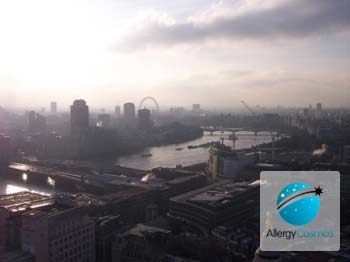London air pollution continues to be an issue. Late last year, the Committee on the Medical Effects of Air Pollutants (COMEAP) brought out the most detailed report to date on the impact of air pollution on the UK population. COMEAP Chairman Professor Jon Ayres commented that it is difficult to express these health impacts numerically but they have looked carefully at the many ways in which these effects are reported and the different relationships between them. The report is mainly about the impact of PM2.5s - particles with a diameter of 2.5 micrometers or less. Concentrations are measured as mass per cubic meter of airborne PM passing through the inlet of a sampler. Here's what COMEAP has concluded on the health impact of PM2.5s:
- In 2008, exposure to PM2.5s was responsible for the loss of 340,000 years of life among the UK population
- This is equivalent to 29,000 deaths
- Air pollution also makes a smaller contribution to the premature deaths of 200,000 people with an average loss of life due to air pollution being less than two years
- Another way of looking at this is as a loss of life expectancy from birth of six months
If we reduced PM2.5 concentrations by just one microgram per cubic meter, life expectancy at birth would go up by 20 days and the UK population could gain an extra 4 million years of life over the next 100 years! If we could clean our air completely (no PM2.5s at all) the predicted life gain among our population would be 36.5 million years, which works out to an increase in life expectancy at birth of six months. You can of course significantly reduce indoor air pollution levels in your home by using an appropriate air purifier.
I was left thinking that the UK population deserves lower levels of particle pollution. So how disappointing to learn last week (12 January) that the government is trying to keep secret some sections of ministerial briefings on air pollution in London, believed to relate to the western extension of the congestion charge and air quality. The government is appealing two previous rulings to make this information public. Environmental campaign groups Clean Air in London and Friends of the Earth are leading the fight for disclosure at a freedom of information tribunal.
In a related matter, the European Commission is to decide early February whether the UK is to be allowed a time extension to comply with the PM10 limit daily value in London. PM10s are a bit larger than PM2.5s but every bit as much a health hazard (the World Health Organisation advises there is no safe exposure limit with PM10s). If the request for an extension is turned down, we will end up in the European Court of Justice over these breaches of air quality laws.
So now I turn to Mayor Boris Johnson's plans for cleaning up the capital's air - the worst in the UK and one of the worst in Europe. He removed the western extension of the congestion charging zone on 4th January, he postponed the introduction of Phase 3 of the low emission zone from October 2010 to January 2012. London's new air quality measures also back off from tougher measures to clean up emissions from black cabs. Previously there was a pledge to get cabs over 10 years old off the road by 2015 but that's been watered down to get cabs over 15 years old off the road by 2012. As a result, the target for PM10 reductions has been revised downwards from 33% to 31%. A small revision of just 2%, you might argue. Unfortunately, it is 2% in the wrong direction and it is sure to cost lives, as the COMEAP report shows.




